THE GATA GUIDE TO GAL GAMES AND DATING SIMS
Dōkyūsei 1992
Translation “Stop… You’re just looking right?”
We live in a world that has become increasingly virtual, the development of simulation games alone has evolved so far that now, we can live out essentially every experience without ever having to interact with another living person. When you think of simulation games you might think of an immersive car-racing-arcade game, or the infamous “Sims”; sub-genres under the classification of simulation games are diverse. One of the niches of the simulation game genre is the dating sim: a “Choose your Own Adventure” type game for PC, game system, or more recently, mobile, where the goal is to get shacked up with the character of your desire. Tired of the dredges that real-life dating poses? Why not give a 2D lover a try?
Scene from Nightlife 1982
A BRIEF HISTORY
Created and popularized in Japan, dating sims come in many kinds and as the sub-genre has evolved, so have the varieties. The main types of dating sims in Japan can be classified as either Bishoujo, which translated literally as “beautiful-girl”, and are games targeted at men or Otome, which translates to “maiden,” games targeted at women. Beneath these classifications are further categorizations, such as ren’ai, which are romance adventure games, eroge, erotic games, or yaruge, full-out sex games.
Nightlife 1982 game cover
Opening menu translation: “ 1. Safe Days Graph, 2. Today’s Positions, 3. Self Explanatory, 4. Position Demo, 5. Finished. Which will you choose?”.
Dating simulations are not a new phenomenon, the first iterations of them dating back to the early 1980s. In 1982, the game company Koei released one of the first commercialized erotic computer games, Night Life. Night Life was originally marketed as a sex-life aid for couples, it contained features to determine a women’s period schedule, a catalogue of possible sex positions and how much time should be allotted to each one. Players were given a limited set of options to play around with before the initiation of virtual intercourse. If dating sims had a grandfather then it would definitely be Night Life, this game is said to have set the stage for what we now know as Bishojo games.
Scene from Girl’s Garden 1984
Now, if dating sims had a grandmother then that would be Sega’s 1984 Girl’s Garden. In an attempt to garner a larger female user base, Sega created Girl’s Garden. In a much more wholesome manner than the former, the game takes players through a series of quests in an effort to win love. The player takes on the character Papri, and helps her in collecting flowers in hopes of capturing her crush’s affections.
Screen grabs of Tenshitachi no Gogo 1985
The following year, in 1985 the first bishoujo game, Tenshitachi no Gogo was released. Tenishitachi no Gogo set the stage for adventure-style dating sims, and influenced modern dating sim structure. The game revolved around an unnamed protagonist whose goal is to seduce a popular girl from the tennis club by befriending and gathering information from other characters. Players could then calculate their progress by checking the number of befriended characters and information received.
Introductory gameplay of Tenshitachi no Gogo 1985
From 1992 came the first instalment in the Doukyuusei series. In this game, the player was given the option to create a harem; no longer would pursuing the heart of one love interest be sufficient, because, in this game, you have fourteen possibilities. This went on to become the most popular style of bishoujo game, giving way to another hit, Tokimeki Memorial.
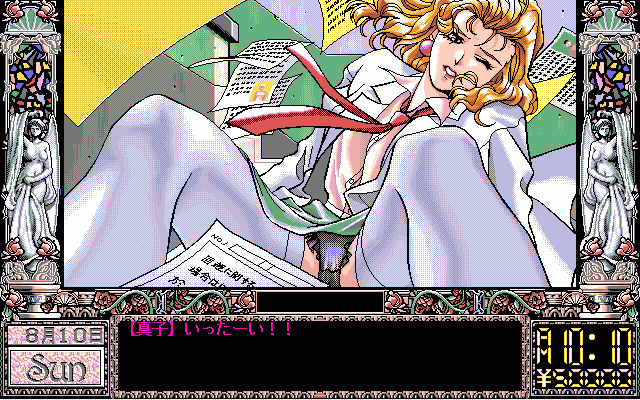
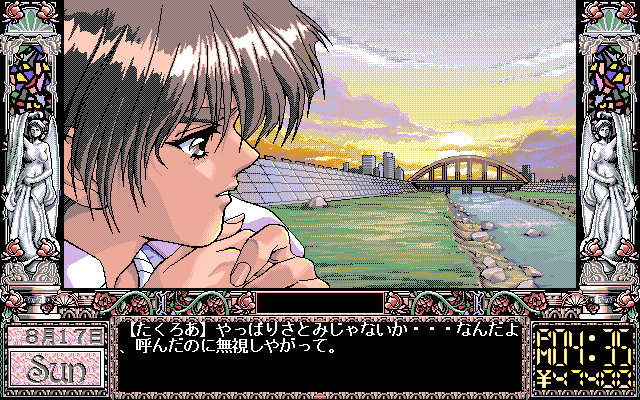
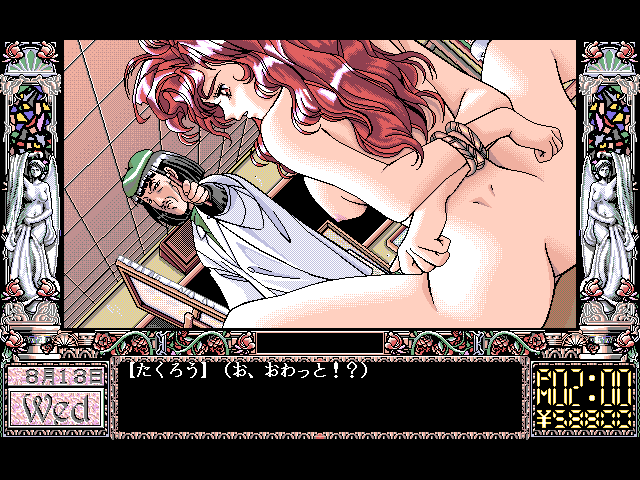
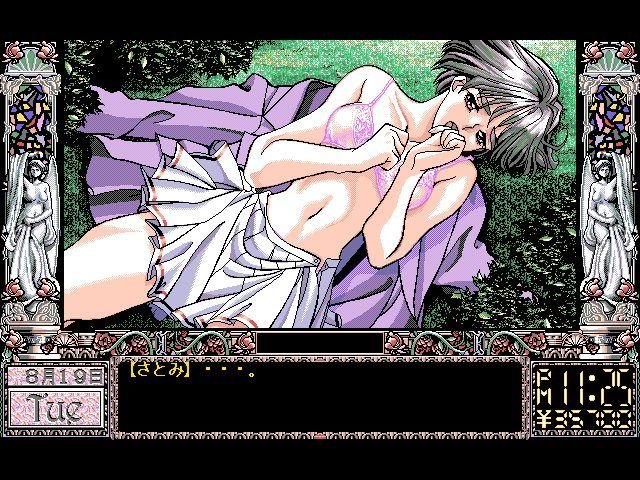
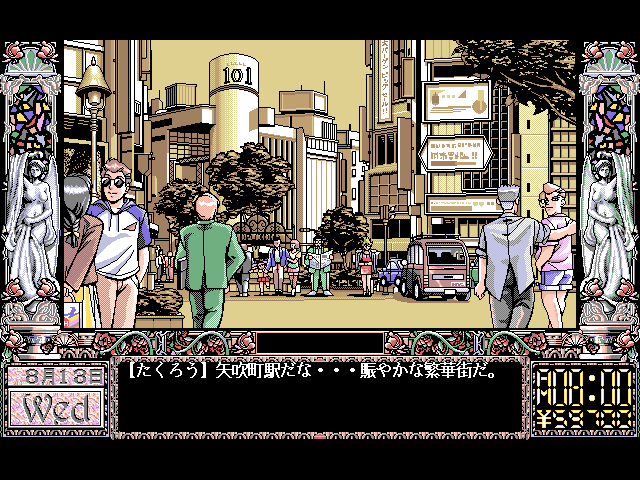
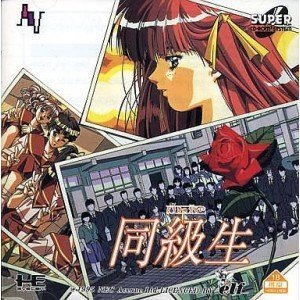
Promotional Video for Tokimeki Memorial 1996
In 1994 when Tokimeki Memorial was released, it was popularized as a game with nonlinear game progression. The game focuses on stat raising and time management gameplay where every decision counts towards the final confession scene. Doukyuusei may have popularized the harem troupe theme of dating sims, but Tokimeki Memorial expands on it by enabling consequences for creating this harem. This is illustrated by the conflict between the player-character and love interests. If the girls in the game don’t feel they are getting enough attention, they then grow jealous and spread rumours about the player, thus decreasing affection points from all love interests, in turn, encouraging strategic planning from users.
Tokimeki Memorial Gameplay
Translation; “It would be better if you weren’t here.”
Translation: “Yes.. but its scary.”
The first renditions of dating simulation games in Japan were primarily made for personal computers, they then eventually veered into the realms of Nintendo and Playstation. However, in 1996 Japanese game company Taito Corporation, decided to subvert this trope through the release of Magical Date. Not only did Magical Date divert from the 2D style that dating sims are known for in favour of a CG design, but it also enabled players to display their loneliness bravery for the world to see, by initially being available to play in an arcade.
Arcade Gameplay from 1996 Magical Date
DATING SIMS TODAY
While dating simulations have mostly been popular in the East, there has been some attention and even attempts to recreate them in the West. The general reception of dating simulation games in the West has not been very highly regarded, the games that do receive attention are often strange variations of the genre where there is an unexpected premise or ending.
This is evident when looking at the two most popular dating sims in the West, Hatoful Boyfriend and Doki Doki Literature Club.
Hatoful Boyfriend promotional gameplay ad
In 2011 Hatoful Boyfriend, an Otome game captured the hearts of western dating sim players by providing an enticing and “love-DOVEY” twist on the genre, being that the player character is the only human at an all pigeon high school, and all love interests are in fact, pigeons. Despite the subversion of the typical species, the game doesn’t stray far from the classic gameplay of a regular Otome game, each pigeon boy’s personality corresponding to a stereotypical male personality trope commonly found in manga and anime.
Hatoful Boyfriend gameplay
Doki Doki Literature Club sold over 2 million copies within the first two months following its release in 2017, highlighting that an American company can still do the genre justice. DDLC follows the typical bishojo harem-style narrative, with some added psychologically thrilling twists that will remind players that trauma from relationships isn’t limited to the real world.
Scene from Doki Doki Literature Club
Despite this popularity, dating sims in the west remain an underground recreation due to their sexually-related reputation. The earliest traditional rendition of the dating sim genre in the West is speculated to be the 2002 Newgrounds game, Simgirls. At 46.6 million views as of January 2011, its one of the most popular western-made dating simulations to exist; although this might be due to the ample “hentai” scenes the game offers, the gameplay and plot line of the Simgirls does not fall short in captivating the viewer, on the same level as the erotic scenes.
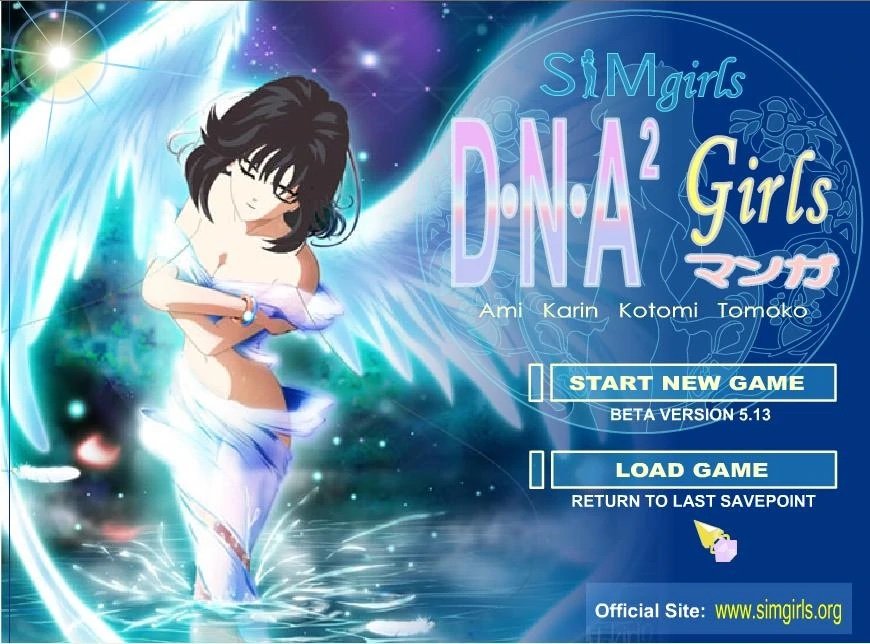
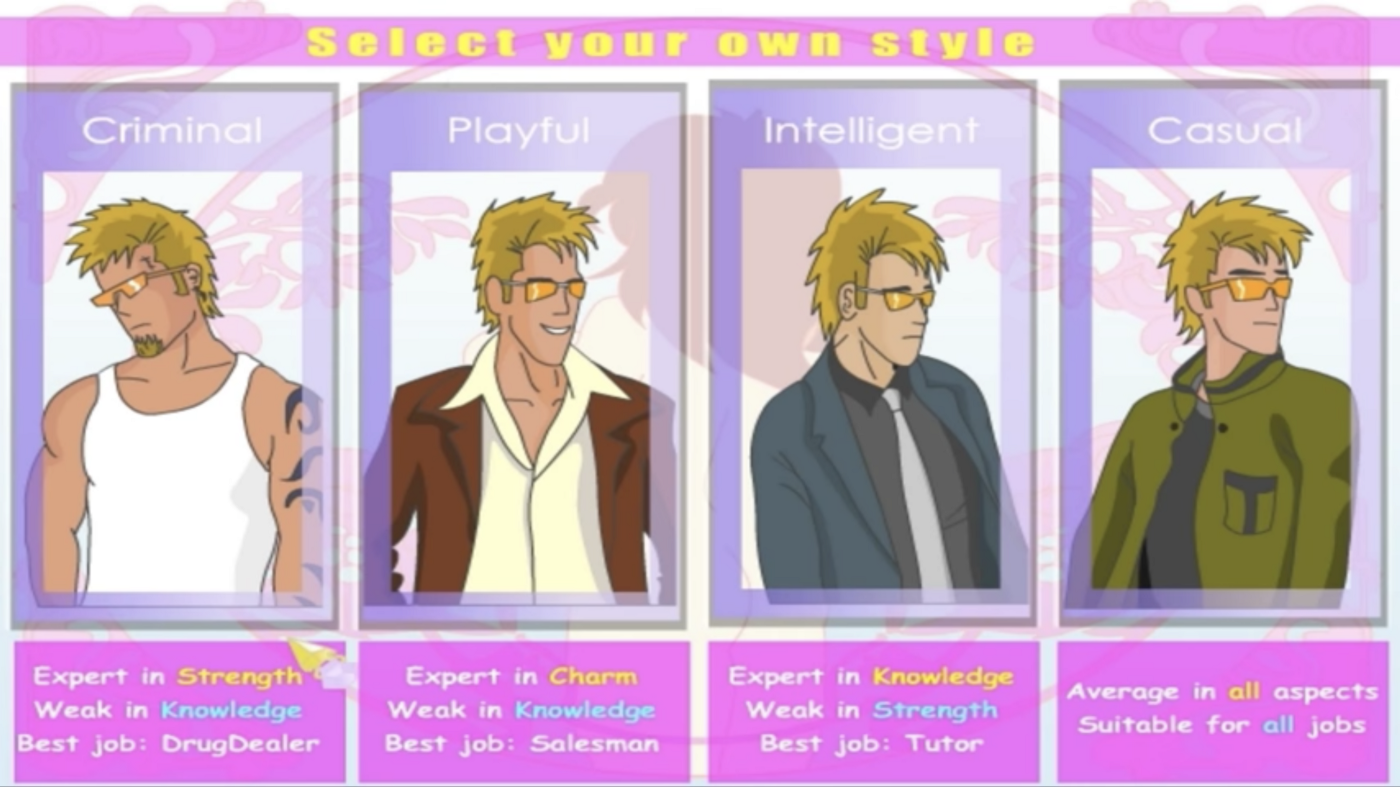
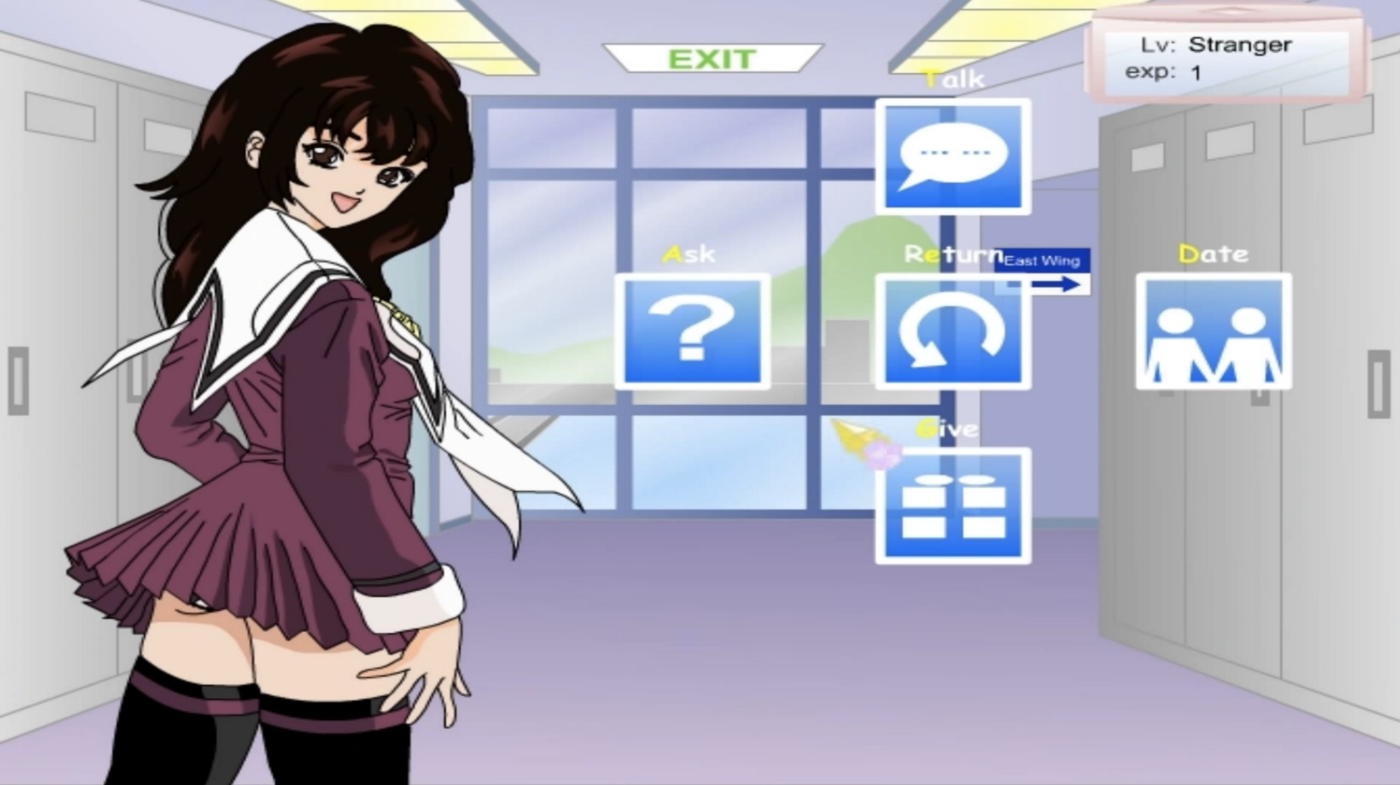


The game’s premise is taken from the Japanese manga Dna² yet the original story is only used loosely. The story follows a relatively unremarkable main character who has no looks, charm, or skill and desperately prays to become attractive so that he may be blessed with a girlfriend. One day, he is surprised to be visited by a futuristic being whose aim is to stop the main character from becoming a “mega-playboy” and overpopulating the earth; she does this by shooting the character with a special futurist weapon that accidentally results in causing the character’s ascent to become the “mega-playboy.” Although the summary may sound like the intro to a really cheesy porn– which isn’t far off from what this game is, Simgirls has become one of the most iconic western iterations of the dating simulation genre.
Sim Girls 2002
As time has progressed, atypical dating sims have increased in popularity, and the production of games portraying a variety of diverse relationships has grown exponentially. As such, you can find dating simulations for whatever dark fantasy you keep in the corners of your mind. KFC has even commissioned their own dating simulation game, “ I Love You Colonel Sanders: A Finger Lickin’ Good Dating Simulator.”
“ I Love You Colonel Sanders: A Finger Lickin’ Good Dating Simulator.” Gameplay



